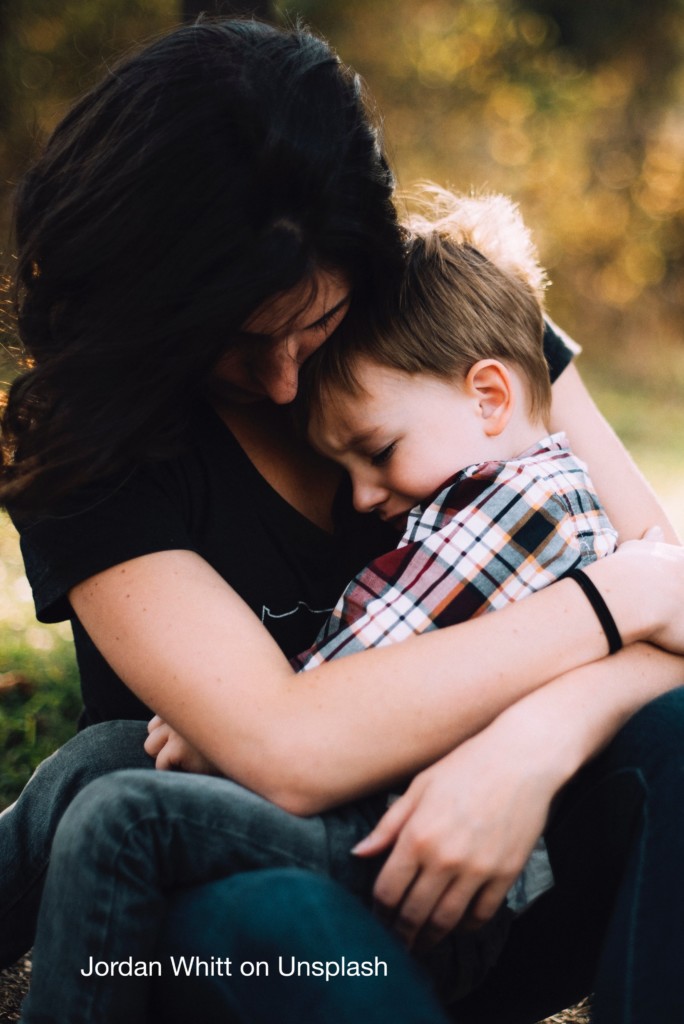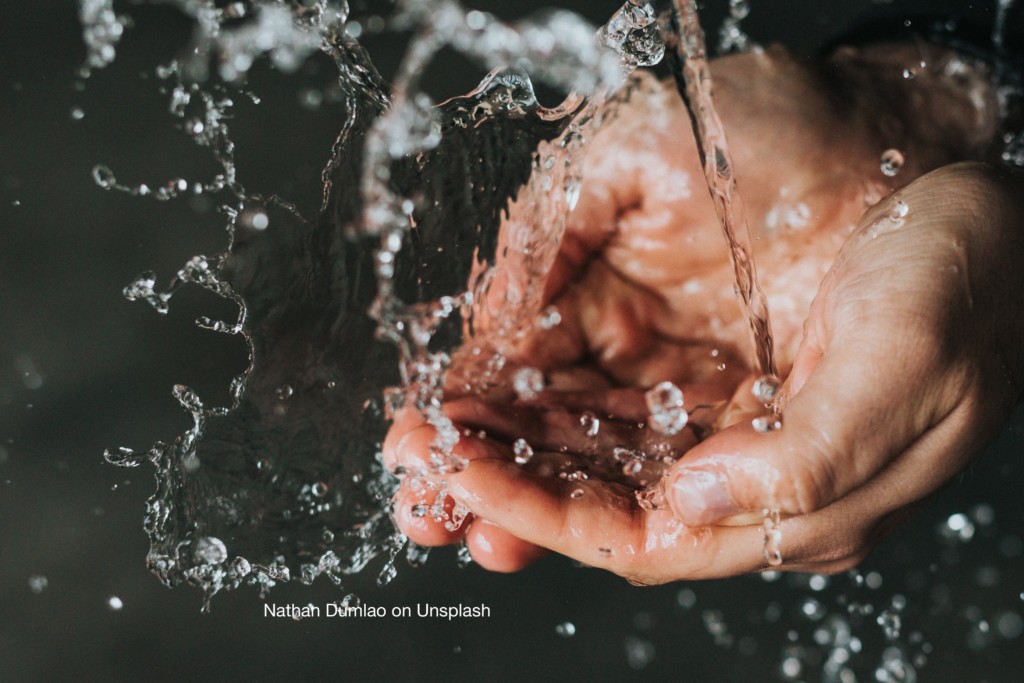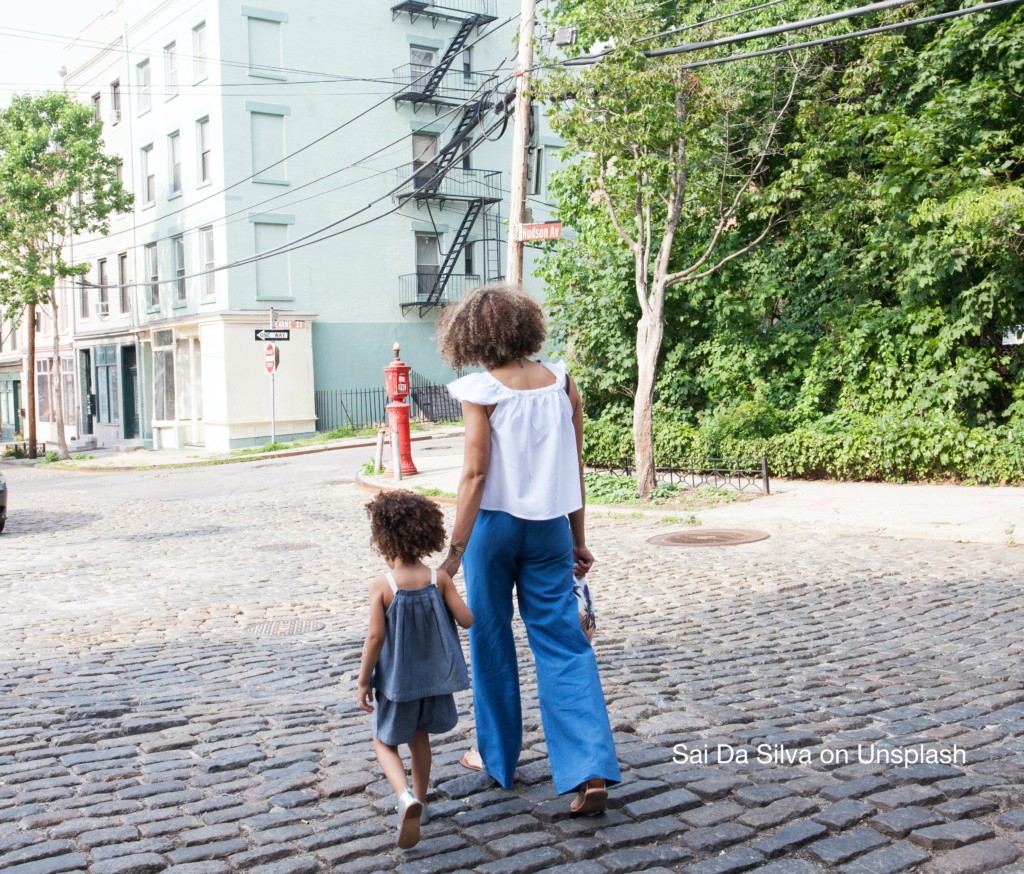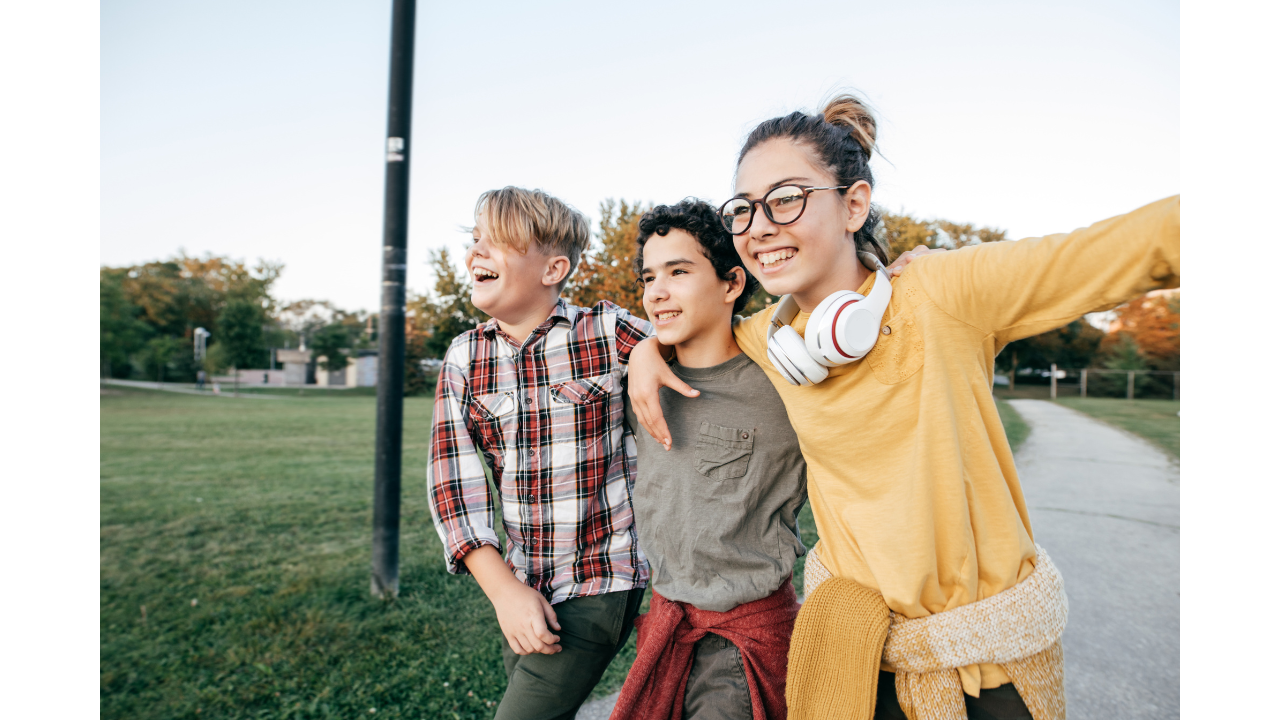Many parents are feeling anxiety about a number of unknown things – how to make a social distancing summer fun, what the school year will look like, and what is happening in the daily news across our country and world. I’m also hearing about personal, day-to-day things – how to get kids off of screens and outside, when to step into sibling squabbles, and how to help anxious children and teens who are acting out. I certainly feel some of these anxieties as a parent myself, so I understand!
I’d like to share some of my most effective ways to reduce anxiety for both parents and kids. I use all of these techniques myself and with my own family, so I invite you to do the same.
Name It to Tame It & Look Within
Belly Breaths (with longer exhales)
Break It Down
Reframe & Reorient
Connect with others
#1 Name It to Tame It & Look Within
Feeling and describing feelings is one of the best practices you can teach your children for many reasons. You are giving them a major tool for self-awareness, effective communication, and empathy. You are providing your child with emotional literacy that will help him/her/them to improve the quality of their relationships. Relationships are essential for health and happiness, and your child’s relationship with their own inner world is a great place to start. For more on how to help your child describe emotions, check out Marc Brackett’s new book, Permission To Feel: Unlocking the Power of Emotions to Help Our Kids, Ourselves and Our Society Thrive.
Awareness of Feelings
When your child is acting out, that’s a sign that big feelings are going on. You can help your child learn to pay attention to those feelings and identify how those feelings…
- feel in their body
- sound in their mind
- come out in their behavior
- tell them what they really need
You can do this by asking a few questions, reflecting back what you hear, and checking for understanding and accuracy. Your deep listening strengthens your child’s relationship with you, which brings about more peace and cooperation. You can also just listen and hold your child, affirming those big feelings with compassion instead of words, which is sometimes all they need.
Example of how to draw out feelings:
“I can see from your face that you are not feeling very good right now. [Make an observation – tricky with teens, but can be helpful]. I’m wondering if you are feeling …. because… ? [Listen for affirmation or correction. With teens, sometimes it is best not to suggest feelings and just listen.] What do you think is making you feel that way? [Listen without interrupting or making your own assessment.] What do you really need right now? What can you do to get your needs met so that you don’t feel so bad?”
Body Connection to Feelings
You can take this conversation further by helping your child identify where in the body he/she/they are feeling their feelings. This can give you clues about what your child needs. For example, in my own experience of myself, tightness in the throat is often about not feeling heard or able to voice feelings, stomach feelings often indicate fear or anxiety, and head feelings can indicate stress and over-thinking. Each person is different, so look for patterns as you seek to understand and support yourself and your children.
Often just talking about feelings can help a person feel better, as long as those feelings are honored and respected (and not judged, diminished, or brushed away). When a conversation gets too intense, you can take a break and let things be for a short while. Then, you can think about how to be supportive and return for more conversation once your child is feeling more calm. I had to hit pause and then return later with one of my children recently and it made a big difference to offer some space between conversations. That space helped both of us gain perspective and brought about new solutions.
#2 Belly Breaths
Teaching yourself and your child to breathe from the belly is a wonderful skill. If your child does not have body-related worries, you can have your child gently rest their hands on their belly to feel it expand as they breathe in, hold for 2 and then contract as they breathe out – twice as long as the in-breath. Many meditation teachers teach that exhaling longer than you inhale helps activate the parasympathetic nervous system, which brings on feelings of calm and relaxation.
You can also try “Box Breathing”: Breathe in for two, hold for two, breathe out for two, hold for two. As you get better at this you can use a count of four to practice box breathing.
Breathing creates space, which lets in light and air and peace.
Breathe While Moving
Some kids don’t want to do the breathing practice and do better with movement. You can have them walk back and forth or in a circle and focus on breathing out if they are willing. They will naturally have to breathe in, so they can just focus on the exhale. Movement gets the body’s systems flowing and changes the focus from anxieties to the body, which is grounding in itself. Try this out yourself!
#3 Break It Down
When you are feeling anxious about something, it’s often helpful to break things down into smaller segments. For example, if you are feeling anxious about how to use or get through the rest of the summer, it can help to break it into weeks and then to break those weeks into days, and then to break those days into time periods. Check out my blog on making summer memorable for ideas on that.
Define tasks to be done in particular time periods.
I have a friend who schedules 15-minute time frames each week to use for tasks she wants to avoid. It’s only 15 minutes, so she says to herself, “You can do anything for 15 minutes!” and then she pays a bill, writes a thank you note, mops the floor, anything that she might normally put off. You can add in a timer with this technique to help kids do tasks they don’t want to do: “Let’s see if you can set the table well in less than three minutes.” “How about we time how long it takes you to unload the dishwasher/put your clothes in the hamper/take out the trash? I bet you can do it in less that five minutes!”
Create “bite-sized” steps
Breaking it down can also look like creating “bite-sized” steps. I have been using this approach with my daughter who feels shy about speaking to people she doesn’t know well. We came up with a first step of my going with her to speak with a neighbor to pick something up. Then she baked cookies for the neighbor which she brought over by herself to say hello. Eventually, she will be able to go into a store and place an order or pick something up. Step by step allows for growth. We need to coach our children and then let them practice independently as they take on new experiences.
#4 Reframe & Reorient
We are getting a crash course in this new kind of “R&R” with the arrival of COVID-19. One of the greatest stressors in life is uncertainty, which is exactly what we have going on with this pandemic. We need to learn to live with uncertainty and keep our anxieties about the unknown in check.
 Our relationship to various strong feelings and circumstances is really what causes us stress more than the feelings or situations themselves.
Our relationship to various strong feelings and circumstances is really what causes us stress more than the feelings or situations themselves.
So when you or your child is feeling afraid, anxious, angry or another painful emotions, it’s good to take a step back and look at how we are framing the situation going on. Looking from multiple perspectives is a useful practice to cultivate.
Align with Your Values
I will share a personal example to illustrate how this can work. Over the weekend, I was feeling frustrated with how little I had gotten done and my husband kindly asked me how I was framing the quality of my day. Did I value walking with a friend, taking time to eat outside and read the newspaper to stay up on current events and talking with my kids? Or did I value crossing “To-Dos” off my list? While I value all of those things, clearly what was most important was my relationships and my taking some time to relax on the weekend. I made a plan for when I could get to tasks on my list and then reoriented towards how I was aligning my day with my values, and I felt better and more able to be present with my family.
Pause to Ask What Matters
Pausing to ask ourselves what really matters is key to this practice of reframing and reorienting. It’s important to make this pause both emotional and physical, since we experience the challenges in both our bodies and minds.
Let’s say your kids (or you and your kids) are fighting and bickering at each other. In that moment, they may be thinking that the most important thing is getting the other one to stop singing or playing or doing whatever is going on, but if you can help them step back, take some breaths or take a little walk to another room and back, you help them reframe what is going on and reorient to what needs to happen by asking these questions:
- What really matters right now?
- Can you figure out what you really need? (respect, love, space, quiet, time, consideration…)
- What is a specific request you can make to get what you need? (This may involve some compromise, setting a timer, different words, or space away from each other…)
 We need to model this pausing and getting clear ourselves so that our children can see what that looks like, so start with yourself. If you have trouble pausing, try something wacky like doing a plank or dropping into a downward facing dog pose to literally shift your perspective. Or go wash your face and hands or step outside to look up at the sky and then come back, refreshed and ready to reframe and reorient. Many of my clients have tried these ideas and found them helpful. Test them out and see what works best for you!
We need to model this pausing and getting clear ourselves so that our children can see what that looks like, so start with yourself. If you have trouble pausing, try something wacky like doing a plank or dropping into a downward facing dog pose to literally shift your perspective. Or go wash your face and hands or step outside to look up at the sky and then come back, refreshed and ready to reframe and reorient. Many of my clients have tried these ideas and found them helpful. Test them out and see what works best for you!
#5 Connect with Others
As human beings, our relationships are primary to our well-being. So when you or your child is feeling anxious or unhappy, it’s time to reach out and connect with others. Of course, sometimes we need to connect with ourselves first, but we can get lost in our own thoughts and worries, so it’s great to connect with others, too. If you don’t have someone to talk with, consider finding a coach, counselor, or an online group that can help you get perspective, air your worries and guide you towards feeling better.
Get Creative with Friends
One of the hardest parts of social distancing is not seeing people in person as often. This has been especially hard on our kids who are largely dependent on us for these arrangements until they are old enough to walk, bike, or drive to see a friend. If your child is cranky or anxious, you can help lift their mood by walking over to see a friend outside or arranging a Face Time or Zoom call with a friend, even if your child is little. They can color or build things together in their own spaces while talking and seeing each other. My youngest daughter and I have separately both enjoyed cooking Zooms with friends where we are making the same recipe as our friends and chatting as we cook. It’s relaxed and fun to compare notes. Biking is a great activity for younger children because they have to stay safely distant, but they can still talk and have fun.
Connect Online
Kids can also arrange to watch movies together, though online services like Netflix Party or other synchronized video playback websites, or play on-line games like “SET,” “Scrabble” or “Ticket To Ride” while talking through a Zoom call. Many kids are also enjoying video games with friends. Just remember to make sure your child is also having time for deeper connection than video games provide by being outside with a friend or sibling, talking with family, or calling up a relative on the phone. If you’re worried about how to make this happen, schedule a call with me. This is one of the top worries of parents I’ve been coaching lately.
Connect through Service
You can also think about neighbors, friends, or relatives who might need support and have your child offer connection to them by reading to a younger child on the phone, doing a drawing or craft activity together, engaging in a porch visit, or doing a service such as delivering groceries, mail, soup (which they can heat up) or cookies (if they are prepared and delivered in a safe way). Check out my conversation jumpstart cards (see the pop up on the right or my home page) if you want ideas to help get these conversations going.
Bringing it all together: Body and Mind
The key to reducing anxiety is to address it from a physical, emotional, and mental level. There’s a saying that “What we resist persists.” So by giving ourselves permission to feel how worries and emotions are playing out in our bodies and minds, we can move through those difficult emotions more quickly and fully by using some of the techniques I’ve outlined here:
- Name It to Tame It & Look Within
- Belly Breaths (with longer exhales)
- Break It Down
- Reframe & Reorient
- Connect with others
You don’t have to do it all. Just choose one technique and try it for a few days.
Then try another one. Experiment and see what works best for you. I’d love to hear your comments. I wish you greater peace as you ride the waves of big feelings. Keep on breathing! We will grow through these challenging times together.
Who I serve: I coach parents from coast to coast in the US and internationally. Thanks to Zoom, I am currently coaching parents from Boston to Seattle, Connecticut to California, as well as New York, Ohio, and Colorado. I’ve worked with parents in Bermuda, Japan, Portugal, and Canada as well. I’m grateful for these global and domestic connections!







Leave A Comment